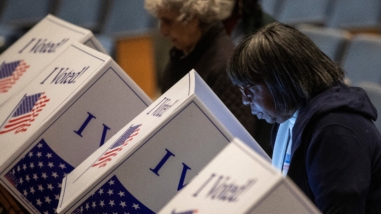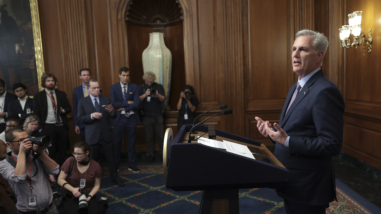Hillary, Jeb, Mitt, Rand—will they or won’t they? When and how will they? Twenty-one months out from the next presidential election, somehow we’re already caught up in the high drama of the campaign. Our democracy has a presidential fixation that rivals that of teenagers addled by the latest pop stars who also go by first names alone.
In some ways this popular obsession is understandable. It is much easier for the media (and thus the citizens consuming it) to focus attention on one person in the Oval Office than on the 535 members of Congress. And with each election and transition it is natural for us to get our hopes up that—at last—a leader will come along to heal our broken politics.
At the Madison Initiative, we’ve gotten plenty of constructive feedback on our Congress-centric view of the world. Our critical friends have told us that we need to make more room in our systems map for the role of presidential leadership in fostering constructive compromise. We are thinking through this input and its implications for our grantmaking. But we don’t envision moving Congress away from the center of our map anytime soon.
For all of the hopes we place in our presidents, in the current era they inevitably disappoint us. Consider that the last two occupants of the White House have come to office pledging to serve, respectively, as “a uniter, not a divider,” and as a leader elevating “hope over fear, unity of purpose over conflict and discord.” However, as Richard Skinner has shown, both George Bush and Barack Obama came to exemplify what he has termed the “partisan presidency.”
Whether we like it or not, in an era of intense polarization the mantle of partisan-in-chief is inevitably handed over with the house keys at 1600 Pennsylvania Avenue. Indeed, George Edwards has demonstrated that, far from rallying Congress, presidential efforts to publicly champion legislation actually work to deepen the partisan divisions that drive legislative gridlock.
If you think about it, the president—one person, the leader of one party—cannot practically encompass and represent the diverse and divergent viewpoints that drive our nation’s politics. Given how deeply and evenly divided we are, in the wake of a presidential election you can count on roughly half of the voters to see the chief executive as the person they voted against.
If you want representation, it has to come in and through Congress, where—despite the unseemliness of so many aspects of the sausage-making—the full diversity of the country is meant to be represented. And it is, more or less: whatever your political perspective, you can count on at least some members of Congress (if not entire party delegations) speaking up for it.
So even as we brace ourselves for the next two years of presidential pandemonium, we will continue to focus our efforts on supporting the ability of Congress and its members to deliberate, negotiate, and compromise in ways that work for the American people.



